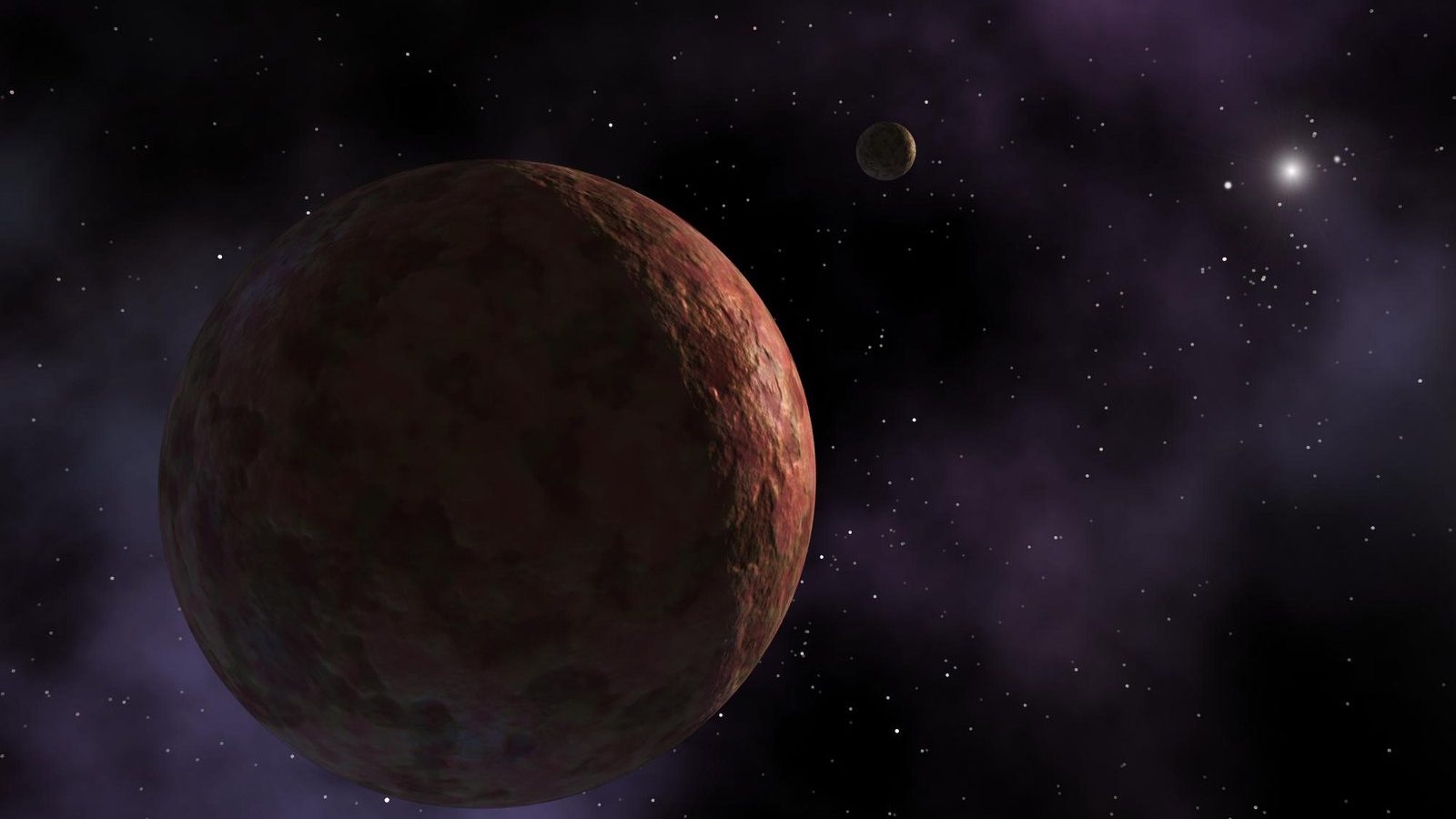
Could a chemical clue help reveal the size of distant dwarf planets?
The James Webb Space Telescope (JWST) is proving to be a game-changer in deep space science—especially when it comes to studying the cold, dim corners of our solar system. One of its latest contributions? Helping scientists better estimate the mass of distant dwarf planets like Sedna by analyzing surface chemistry.
Thanks to groundbreaking spectroscopy data, researchers are discovering key chemical differences between dwarf worlds such as Pluto and Sedna, providing clues that directly impact how we calculate their size and structure.
What Is the Kuiper Belt, and Why Does It Matter?
The Kuiper Belt is a massive region beyond Neptune’s orbit, teeming with icy bodies, dwarf planets, and ancient comets. These celestial objects are like frozen time capsules, preserving material from the early solar system.
“Kuiper Belt objects are icy worlds that can tell us what conditions were like billions of years ago,” said Amelia Bettati, lead researcher at Elon University.
Understanding what’s on the surface of these objects—especially molecules like methane and ethane—can give astronomers a clearer picture of how planetary bodies formed and evolved.
JWST Uncovers Key Differences Between Pluto and Sedna
Using JWST’s advanced near-infrared spectroscopic tools, scientists discovered that:
-
Pluto contains both methane (CH₄) and ethane (C₂H₆) on its surface.
-
Sedna, however, only shows evidence of methane.
Why does this matter?
This chemical difference suggests that Sedna may be too small to hold onto lighter molecules like methane over billions of years, while heavier molecules such as ethane remain. The concept is rooted in gravitational retention: the smaller the object, the weaker its gravity, and the easier it is for gases to escape into space.
Mass Matters: How Scientists Estimate Sedna’s Size
Bettati and co-author Jonathan Lunine from NASA’s Jet Propulsion Laboratory used two escape models to simulate how gases like methane and ethane behave over time:
-
Jeans Escape Model – Predicts that only the fastest molecules escape.
-
Hydrodynamic Escape – Suggests large portions of an atmosphere can escape when the pressure and temperature are right.
Their findings confirmed:
-
Methane escaped from Sedna but stayed on Pluto.
-
Ethane remained on both, even under high out gassing rates.
This evidence implies Sedna’s mass must be higher than previously estimated—just enough to retain ethane but not methane.
Validating the Model: Comparing to Enceladus and Comet 67P
To strengthen their results, the researchers used data from:
-
Comet 67P/Churyumov–Gerasimenko (studied by the ESA’s Rosetta probe)
-
Saturn’s moon Enceladus (observed by NASA’s Cassini mission)
These icy bodies served as analogs to estimate the original methane-to-ethane ratios on Sedna. The models consistently showed that Sedna—and even another dwarf planet called Gonggong—had likely lost their methane due to their relatively low mass.
Why This Matters for Future Space Missions
Knowing which gases escape or linger on Kuiper Belt objects helps scientists:
-
Understand the atmospheric evolution of small bodies.
-
Identify which objects are worth targeting for future missions.
-
Refine mass and composition estimates without landing spacecraft.
“It highlights how JWST is revolutionizing our understanding of the most distant solar system bodies,” Bettati noted.
FAQs: How JWST Is Sizing Up Dwarf Planets
1. Why did methane escape from Sedna but not from Pluto?
Sedna is significantly smaller than Pluto, so its weaker gravity couldn’t retain methane over billions of years.
2. What makes JWST effective for studying distant objects?
Its infrared capabilities allow it to detect faint chemical signatures on extremely distant and cold celestial bodies.
3. What does the absence of methane mean for Sedna’s mass?
It implies that Sedna’s mass is close to the threshold where it can no longer retain lighter volatiles, helping researchers update its estimated mass.
4. How do Enceladus and Comet 67P help validate the model?
They serve as comparison points for out gassing behavior and chemical composition, which helps calibrate mass loss estimates on Sedna.
5. Is the Kuiper Belt bigger than we think?
Yes, ongoing discoveries suggest the Kuiper Belt might extend much farther and hold more objects than previously mapped.
Final Thoughts
The James Webb Space Telescope is helping scientists unlock the secrets of our solar system’s outer edge—one molecule at a time. By tracking the presence (or absence) of key volatiles on dwarf planets like Sedna and Gonggong, JWST is shaping how we estimate their mass, history, and potential for future exploration.
🛰️ What do you think JWST will discover next in the Kuiper Belt? Let us know in the comments below!
Read our previous article: Massive Black Hole Found in Milky Way’s Neighbor
